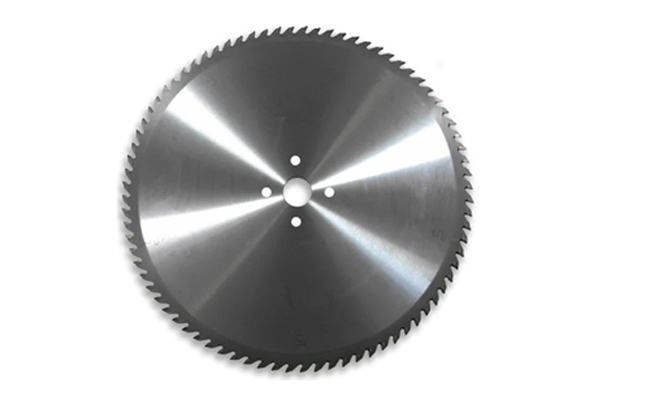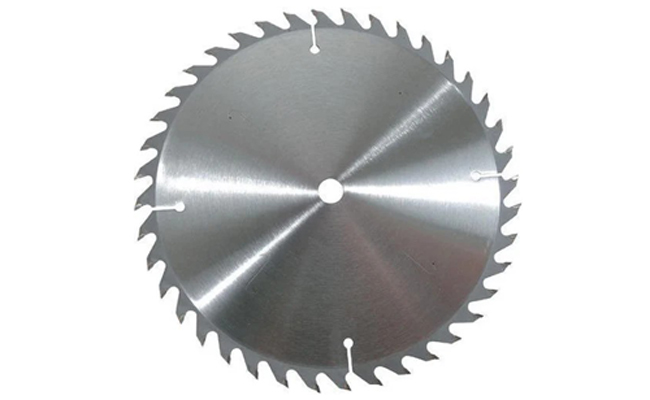GZ4230 Fully Automatic Band Saw Machine
Cutting Capacity :
Choosing the right metal circular saw blade requires considering multiple factors, including material type, cutting requirements, equipment matching, and the characteristics of the saw blade itself. The following is a detailed selection guide:

1. Determine the material to be cut
The selection of metal circular saw blades depends first on the type and hardness of the material to be cut:
Ordinary steel: Choose high-speed steel (HSS) or saw blades with carbide (tungsten carbide) teeth.
Stainless steel: Special alloy saw blades (such as saw blades containing cobalt or special coatings) are required to prevent sticking and overheating.
Aluminum and aluminum alloys: High-speed steel or alloy saw blades with large tooth pitch, polished or coated to avoid material sticking.
Copper and brass: Saw blades with fine teeth and sharp edges to reduce burrs.
Cast iron: Carbide saw blades with strong wear resistance.
Titanium alloy/high-strength metal: Special alloy saw blades, which require low-speed and high-torque cutting.
2. Saw blade material
High-speed steel (HSS): suitable for soft metal and medium and low speed cutting, low cost but short life.
Tungsten carbide: wear-resistant and high temperature resistant, suitable for high hardness metal and high efficiency cutting, long life but high price.
Coated saw blades (such as TiN, TiAlN): reduce friction, extend life, suitable for stainless steel or high temperature alloys.
3. Tooth shape and number of teeth
Tooth shape:
Alternating teeth (ATB): general type, suitable for most metals.
Trapezoidal teeth (TCG): suitable for cutting thick-walled pipes or high hardness materials.
Flat teeth (FT): used for fine cutting to reduce burrs.
Number of teeth (TPI):
The thicker/softer the material: the fewer teeth (such as 10-24 teeth), the smoother the chip removal.
The thinner/harder the material: the more teeth (such as 24-60 teeth), the smoother the cutting.

4. Diameter and thickness
Diameter: Need to match the saw machine specifications, common diameter is 100-500mm.
Formula: Saw blade diameter ≥ material thickness × 2 + saw machine flange diameter.
Thickness: Thick saw blades have better rigidity, but large cutting loss; thin saw blades are suitable for precision cutting.
5. Speed and cutting parameters
The maximum speed indicated on the saw blade must be higher than the equipment speed to avoid danger.
Feed speed: Hard metal is cut at low speed, and soft metal can be appropriately accelerated.
6. Other key factors
Center hole size: must match the equipment spindle.
Cooling method: dry cutting saw blade (with heat dissipation holes) or wet cutting saw blade (coolant required).
Brand and quality: well-known brands (such as LENOX, STARRETT, BOSCH) are more reliable.
7. Common mistakes to avoid
Wrong number of teeth leads to chip blockage or excessive burrs.
The saw blade material does not match the metal, which accelerates wear.
Ignoring the power of the equipment causes the saw blade to jam or break.
Example selection
Cutting 3mm thick stainless steel pipe:
Choose carbide saw blade, diameter 110mm, number of teeth 80-100, alternating tooth shape, TiN coating, low speed cutting (about 1500 RPM).
Cutting 10mm aluminum plate:
High-speed steel saw blade, diameter 250mm, number of teeth 24-36, large tooth pitch, dry cutting.
By comprehensively considering the material, saw blade characteristics and equipment parameters, the cutting efficiency and quality can be significantly improved, while the saw blade life can be extended. If there are special needs (such as mass production), it is recommended to consult a professional supplier.
Cutting Capacity :
Cutting Capacity :